Observational fear conditioning
The study was divided into two macro experiments: the observational fear procedure that included behavioural observations and corticosterone analysis, and the operant fear conditioning procedure with diazepam injections. Specimens used for one experiment could not be used for the other. Wistar white rats were used.
For the observational fear experiment, the animals were divided in two groups: observers and demonstrators. The procedure focused on preparing the animals for fear acquisition, with different requisites depending on their group. During fear acquisition two rats would be placed together in the experimental cage: an observer and a demonstrator. The demonstrator received a foot shock paired with an acoustic tone while the observer watches. After 30 days without further procedures, the rats were exposed to the acoustic tone again, individually. The procedure is called fear test.
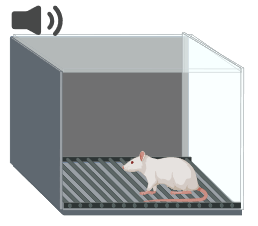
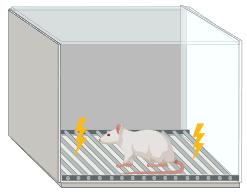
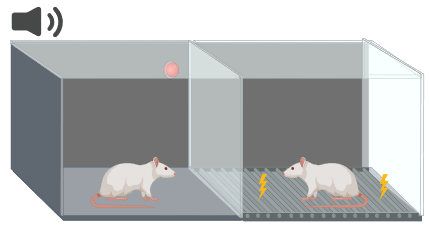
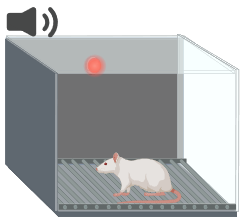
Data collection – Observational fear
Behaviours were recorded for both the fear acquisition and the fear test of each specimen through camera recordings, and behaviours were scored manually for each individual. Behaviours included:
- Freezing: can be defined as a state of tonic immobility, with occasional small movements, maintained by the animal for more than one second, usually positioned facing the centre of the cage.
- Head scanning: similar to freezing, it also implies immobility but with a rhythmic movement of the head from left to right.
- Grooming: action the animal does on itself, mainly with the front limbs or with the head.
- Sniffing: most common of the behaviours displayed, sniffing implies a movement and/or contact of the whiskers with a surface such as the wall or the grid of the cage. A separate scoring is done when the rat sniffs at no specific location, named free-air sniffing.
- Rearing: the action of standing on the back limbs from the animal. With sniffing, is considered as a macro-behaviour “exploration”.
- Jumping: rare behaviour. The animal is in a position for which no limbs are touching the surface of the operant box.
- Social interaction: during the fear acquisition session, the animals interact through the cage divider.
Blood samples were taken from the rats at four timepoints and subsequently worked and analysed in the chemical lab. In summary, each rat produced four blood samples collected in different moments of the experiment.
- Baseline (t0): collected before any manipulation had happened on the animals.
- After fear acquisition (t1): collected approximately 10 minutes after each fear acquisition session.
- One day after fear acquisition (t2): collected the day after fear acquisition, approximately at the same time to respect the 24 hours interval.
- After fear test (t3): collected approximately 10 minutes after each fear test session
Operant fear conditioning and data collection
For the operant fear experiment, the rats were individually trained for multiple weeks for operant task; pressing a lever to obtain a reward. Firstly, at fixed ratio of one (one press one reward) then at fixed ratio two (two presses one reward). The animals were then divided into two groups and exposed to different intensities of electric foot shock (0.4 mA and 0.8 mA) paired with an acoustic tone. One week after, the specimens undergo fear test, exposure to the acoustic tone alone. The suppression of operant behaviour was used for measuring the fear. Experimental procedure:
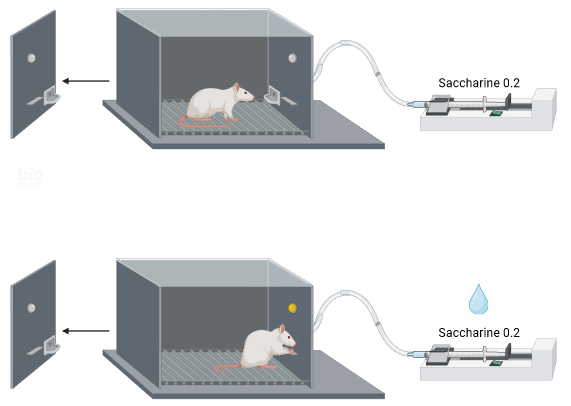
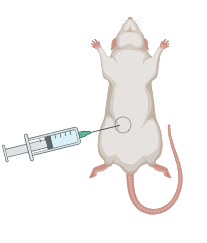
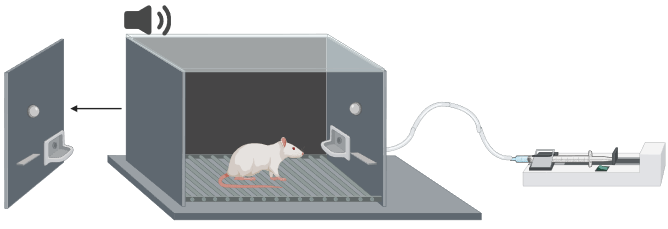
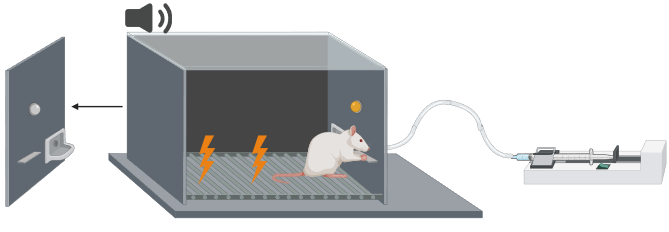
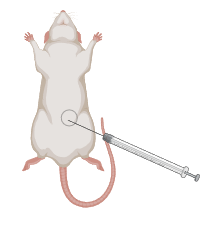
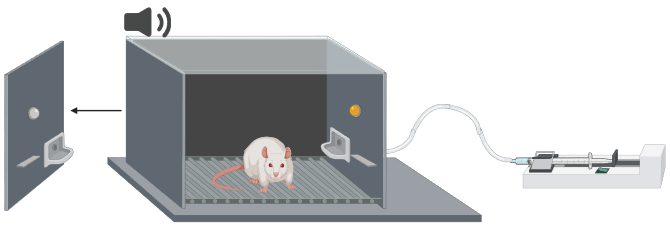
Suppression ratio was recorded during fear testing session alone, lever press were recorded through the whole experiment.